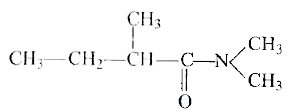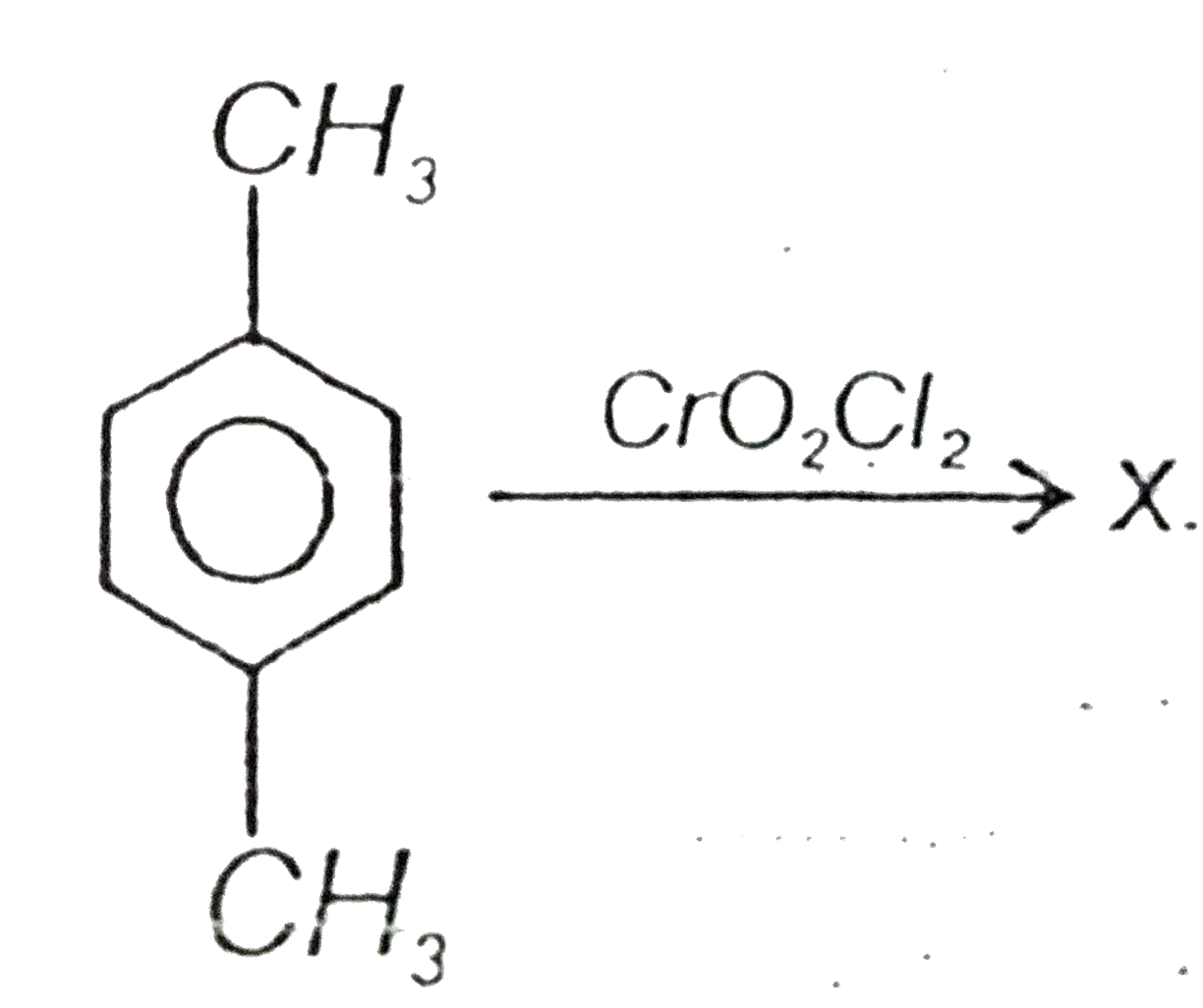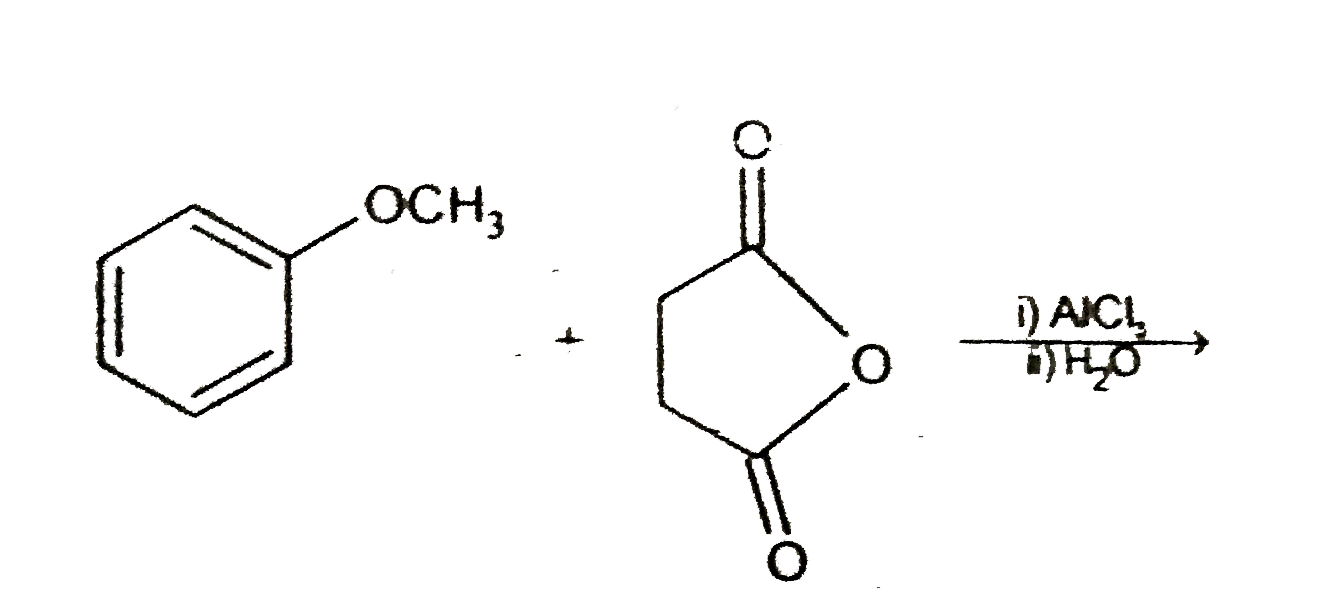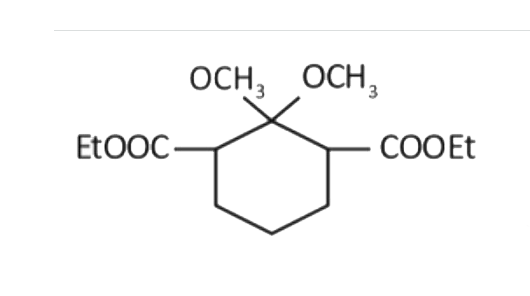R−CNH3O+−−−−−−−−−−−→Complete hydrolysisXNH3−−→ΔY(i)Br2+KOH−−−−−−−−→(ii)H3O+Z
Identify Z.
R−NH2
R−CH2NH2
R−O∣∣C−NH2
R-CN
The correct Answer is:1
To solve the question step-by-step, we will analyze the reactions mentioned in the problem and identify the final compound Z.
Step 1: Complete Hydrolysis of Alkyl Cyanide (R-CN)
- When an alkyl cyanide (R-CN) undergoes complete hydrolysis in the presence of hydronium ions (H₃O⁺), it converts to a carboxylic acid.
- The reaction can be represented as:
R−CN+H3O+→R−COOH(Carboxylic Acid)
- Hint: Remember that hydrolysis of nitriles (cyanides) leads to carboxylic acids.
Step 2: Reaction of Carboxylic Acid with Ammonia
- The carboxylic acid (R-COOH) formed in the previous step reacts with ammonia (NH₃) upon heating.
- This reaction results in the formation of an amide (R-C(=O)NH₂):
R−COOH+NH3Δ−→R−C(=O)NH2(Amide)
- Hint: Heating carboxylic acids with ammonia typically yields amides.
Step 3: Treatment of Amide with Bromine and KOH
- The amide (R-C(=O)NH₂) is then treated with bromine (Br₂) and potassium hydroxide (KOH).
- This reaction is known as the Hofmann degradation or Hofmann bromamide reaction, which converts the amide to a primary amine (R-NH₂):
R−C(=O)NH2+Br2+KOH→R−NH2+K2CO3+KBr+H2O
- Hint: The Hofmann reaction is crucial for converting amides to amines.
Step 4: Acidification
- After the reaction with Br₂ and KOH, the product is typically acidified (with H₃O⁺), but this step does not change the primary amine formed.
- Thus, the final product remains:
Z=R−NH2(Primary Amine)
- Hint: Acidification is often used to neutralize the reaction mixture but does not alter the primary amine.
Conclusion
- The final compound Z, after all the reactions, is identified as R-NH₂, which is a primary amine.
Final Answer
Z = R-NH₂
- When an alkyl cyanide (R-CN) undergoes complete hydrolysis in the presence of hydronium ions (H₃O⁺), it converts to a carboxylic acid.
- The reaction can be represented as:
R−CN+H3O+→R−COOH(Carboxylic Acid)
- Hint: Remember that hydrolysis of nitriles (cyanides) leads to carboxylic acids.
- The carboxylic acid (R-COOH) formed in the previous step reacts with ammonia (NH₃) upon heating.
- This reaction results in the formation of an amide (R-C(=O)NH₂):
R−COOH+NH3Δ−→R−C(=O)NH2(Amide)
- Hint: Heating carboxylic acids with ammonia typically yields amides.
- The amide (R-C(=O)NH₂) is then treated with bromine (Br₂) and potassium hydroxide (KOH).
- This reaction is known as the Hofmann degradation or Hofmann bromamide reaction, which converts the amide to a primary amine (R-NH₂):
R−C(=O)NH2+Br2+KOH→R−NH2+K2CO3+KBr+H2O
- Hint: The Hofmann reaction is crucial for converting amides to amines.
- After the reaction with Br₂ and KOH, the product is typically acidified (with H₃O⁺), but this step does not change the primary amine formed.
- Thus, the final product remains:
Z=R−NH2(Primary Amine)
- Hint: Acidification is often used to neutralize the reaction mixture but does not alter the primary amine.
- The final compound Z, after all the reactions, is identified as R-NH₂, which is a primary amine.
Z = R-NH₂
Similar Questions
Knowledge Check
- Question 1 - Select One
CH3−CH∣Br−CH2−O∣∣C−CH3N2HO(4),ϴOH−−−−−−−−−−−→Δ Product:
A B
B C
C D
D
- Question 2 - Select One
H3C−CH2−CH3∣CH−C∣∣O−NH2Br2+KOH−−−−−−−−−→ΔA1.CH3I(excess)−−−−−−−−−−−−→2.AgOH,ΔB
The major product (B) is :ACH3−CH2−CH=CH2B CH3C−CH=CH−CH3D
CH3C−CH=CH−CH3D
- Question 3 - Select One
CH3−O∣∣C−O−HNaH14CO3−−−−−→(A)(gas)(i)PhMgBr−−−−−−−→(ii)H3O⊕(B)
CH3−O∣∣S∣∣O−O−HNaH14CO3−−−−−→(C)gas(i)PhMgBr−−−−−−−→(ii)H3O⊕(D)
Product (B) and (D) in the above reaction are :APh−O∣∣C−O−H,Ph−O∣∣S∣∣O−O−HBPh−O∣∣C14−O−H,Ph−O∣∣S−O−HCPh−O∣∣C14−O−H,Ph−O∣∣C14−O−HDPh−O∣∣C−OH,Ph−O∣∣S−O−H
Complete the following reactions:
(i) CH3−CH3∣C∣Cl−CH2CH3alcKOH−−−−→ΔAO3−−−−−→Zn/H2O(B+C)
(ii) CH3ICH−CH3alcKCN−−−−→A(i)SnCl2/HCl−−−−−−−−−−−−→(ii)H2O.OH.H2O2B
(iii) HCNHCl/AlCl3−−−−−−→A(i)C6H6Δ−−−−−−−−−−→(ii)(H2O)/H−B
(iv) View Solution
View SolutionCH3CH3∣C∣CH3−Br KOH (alcoholic) −−−−−−−−−−−−→Δ(A)HBr/R2O2−−−−−−→(B)(major)
(B) isView SolutionAKCN−−→BH3O+−−−−→NH3/ΔCBr2−−→KOHCH3−CH2−NH2
reactant A in given reaction sequence?View Solution i.AlCl3−−−−→ii.H2OView Solution
i.AlCl3−−−−→ii.H2OView SolutionComplete the following reactions:
Benzene(A) Ac2O−−−−→+AICI3 (B) (i)MeMgBr−−−−−−−→(ii)H3O(+) (C) Conc.H2SO4 (D) 1.BH3/THF−−−−−−−−−−→2.H2O2/O(−)H (E)View Solution


